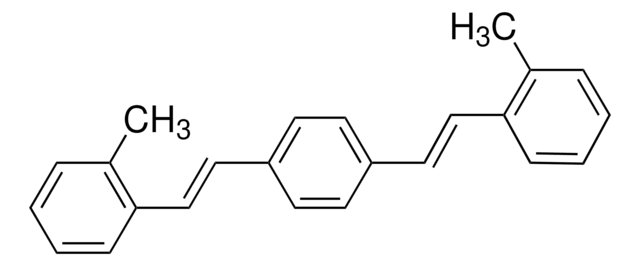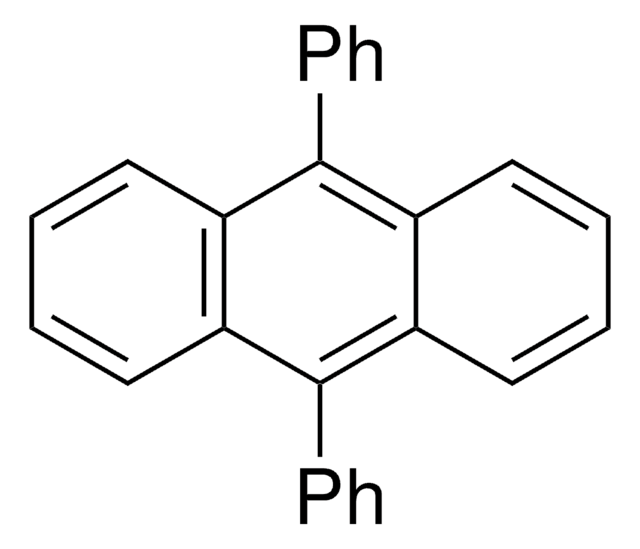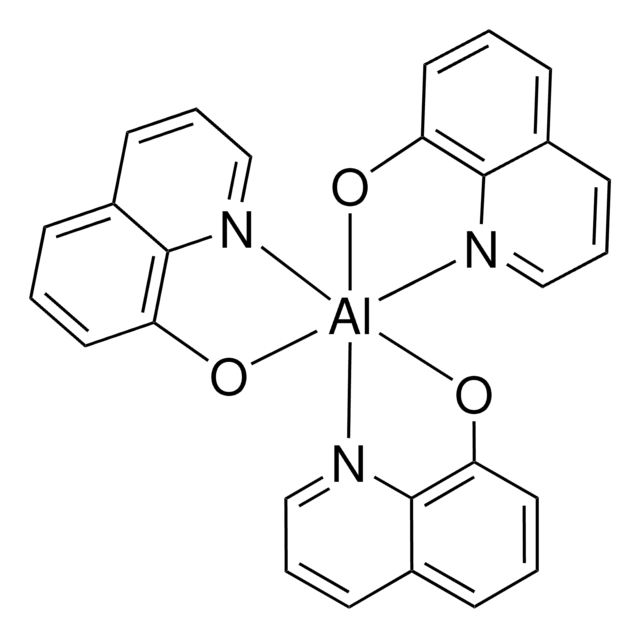B8378
2-(4-tert-Butylphenyl)-5-(4-biphenylyl)-1,3,4-oxadiazole
≥99%
Synonym(s):
2-(4-Biphenylyl)-5-(4-tert-butylphenyl)-1,3,4-oxadiazole, Butyl-PBD
About This Item
Recommended Products
assay
≥99%
form
powder
fluorescence
λex 305 nm; λem 364 nm in ethanol
OLED device performance
ITO/DTFD/PBD/Alq3/LiF/Al
ITO/PEDOT:PSS/TPD/PVK:Ir(ppy)3 (6%)/PBD/Al
storage temp.
2-8°C
SMILES string
CC(C)(C)c1ccc(cc1)-c2nnc(o2)-c3ccc(cc3)-c4ccccc4
InChI
1S/C24H22N2O/c1-24(2,3)21-15-13-20(14-16-21)23-26-25-22(27-23)19-11-9-18(10-12-19)17-7-5-4-6-8-17/h4-16H,1-3H3
InChI key
XZCJVWCMJYNSQO-UHFFFAOYSA-N
Looking for similar products? Visit Product Comparison Guide
Application
Related product
Storage Class
11 - Combustible Solids
wgk_germany
WGK 3
flash_point_f
Not applicable
flash_point_c
Not applicable
ppe
Eyeshields, Gloves, type N95 (US)
Certificates of Analysis (COA)
Search for Certificates of Analysis (COA) by entering the products Lot/Batch Number. Lot and Batch Numbers can be found on a product’s label following the words ‘Lot’ or ‘Batch’.
Already Own This Product?
Find documentation for the products that you have recently purchased in the Document Library.
Customers Also Viewed
Our team of scientists has experience in all areas of research including Life Science, Material Science, Chemical Synthesis, Chromatography, Analytical and many others.
Contact Technical Service









